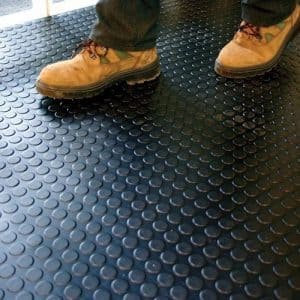The Type of Floor Mats

Floor mats are an essential component of any workplace environment. They not only provide a clean and safe surface for employees to walk on, but they also offer various benefits depending on their type. One type of floor mat that has gained immense popularity in recent years is the anti-fatigue floor mat.
In this article, we will explore the different types of floor mats and discuss the importance of anti-fatigue floor mats in workplaces.
There are several types of floor mats available in the market, each serving a specific purpose. Let’s take a look at some of the common types:
1. Entrance Mats: These mats are placed at the entrance of a facility to prevent dirt, debris, and moisture from being tracked inside. They effectively scrape dirt off shoes and absorb moisture, keeping the floors clean and safe.
2. Anti-Slip Mats: As the name suggests, anti-slip mats are designed to provide traction and prevent slip and fall accidents. They are commonly used in areas where spills or wet floors are frequent, such as kitchens, bathrooms, and industrial settings.
3. Anti-Fatigue Mats: These mats are specifically designed to reduce fatigue and discomfort caused by standing for extended periods. They have cushioning properties that help alleviate stress on the joints, muscles, and lower back. Anti-fatigue mats are commonly used in workplaces where employees are required to stand for long durations, such as assembly lines, cashier counters, and laboratories.
The Importance of Anti-fatigue Floor Mats in the Workplace
Now, let’s delve into the importance of anti-fatigue floor mats in workplaces:
1. Enhanced Comfort: Standing for long periods can cause discomfort and fatigue, leading to decreased productivity and increased risk of musculoskeletal disorders. Anti-fatigue floor mats provide cushioning and support, reducing the impact on the body and minimizing fatigue. By enhancing comfort, these mats help employees stay focused and energized throughout the day.
2. Improved Safety: Fatigue can impair concentration and coordination, increasing the likelihood of accidents and injuries in the workplace. Anti-fatigue mats help combat this issue by reducing fatigue and enhancing alertness. By providing a stable and slip-resistant surface, these mats contribute to a safer working environment.
3. Health Benefits: Prolonged standing can lead to various health issues, including foot and leg pain, varicose veins, and joint problems. Anti-fatigue mats promote better blood circulation, reduce pressure on the feet and legs, and alleviate strain on the body. By prioritizing employee well-being, employers can create a healthier workforce and reduce the risk of work-related injuries.
4. Increased Productivity: When employees are comfortable and free from fatigue, their productivity levels tend to increase. Anti-fatigue mats can help reduce absenteeism due to health issues and improve overall work efficiency. By investing in the well-being of their employees, employers can witness a positive impact on the bottom line.
In conclusion, floor mats play a crucial role in maintaining a clean and safe workplace environment. Among the various types of floor mats available, anti-fatigue mats stand out for their ability to reduce fatigue, enhance comfort, improve safety, and promote employee well-being.
By incorporating anti-fatigue mats into their workplaces, employers can create a more productive and healthy workforce.





